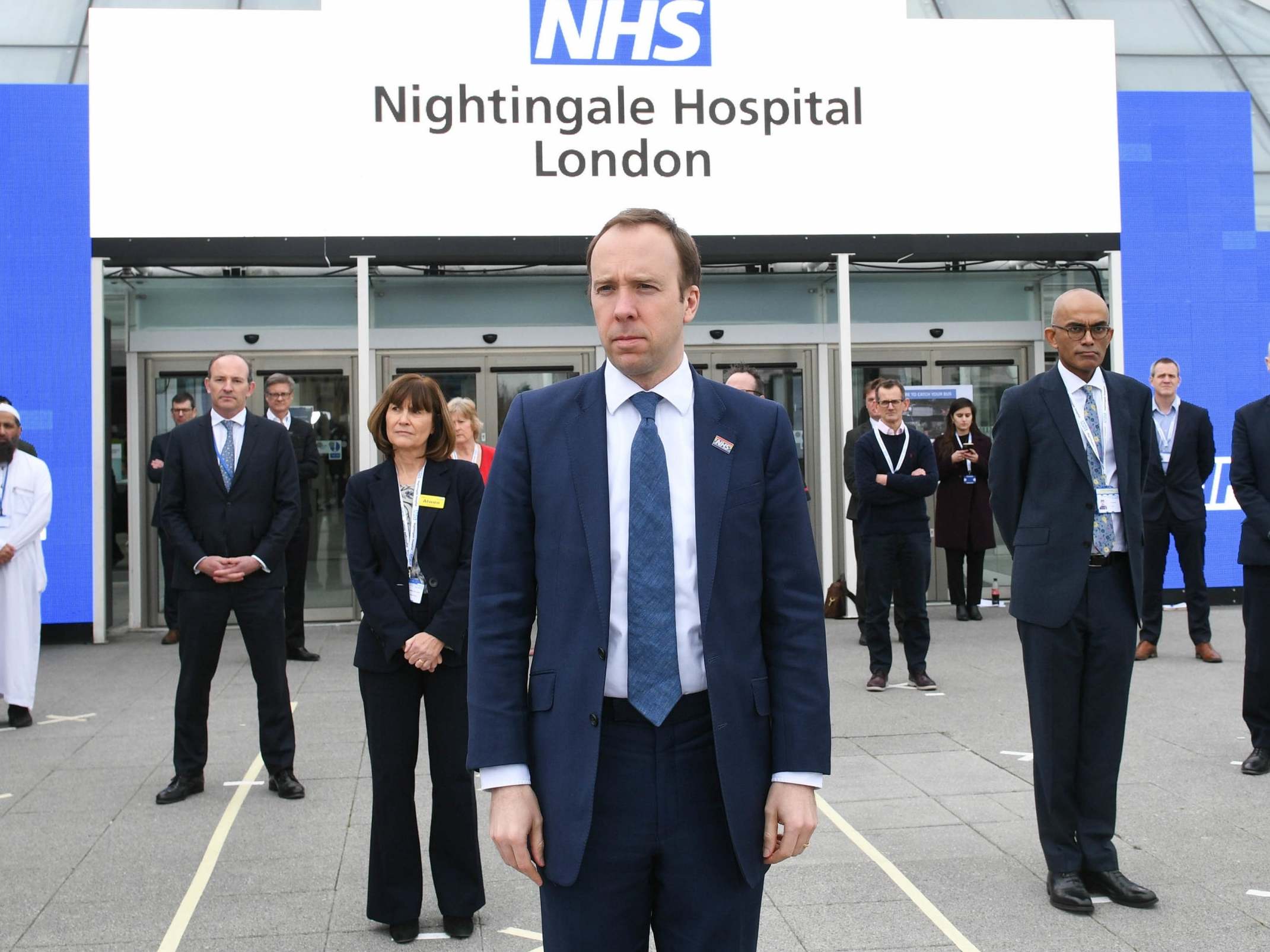Politics Explained: Setting targets can sometimes produce results
Matt Hancock was mocked for aiming to test 100,000 people a day, but his target has produced a huge increase in capacity

Once upon a time government targets for the health service were bad and the Conservatives criticised them. Setting a maximum four-hour wait in accident and emergency departments, for example, “distorted clinical priorities”.
That was when the Conservatives were in opposition, and a Labour government was trying to ensure that the public money it spent on the NHS wasn’t frittered away.
Now the tables are turned. Matt Hancock, the health secretary, has set a target of having 100,000 tests for coronavirus carried out daily by Thursday, the end of the month.
Labour has been critical, mainly because of the gap between testing capacity and the actual numbers tested. Some critics also point out that the target is not as much as the 250,000 tests a day that Boris Johnson spoke airily about – without setting a deadline – in the long-ago time before he himself was tested and went into hospital.
Indeed, some on Hancock’s own side seemed sceptical. Anonymous Downing Street sources suggested that the 100,000 figure was plucked from thin air, and Dominic Raab pointedly described it as “the health secretary’s target”.
What has now become clear, though, is that setting a target has achieved its objective. Exactly 100,000 tests may not be carried out on Thursday, but it may be close enough, and the government will say that it is waiting for thousands of home kits posted out to come back.
From a low base of 10,000 tests a day at the start of the month, Hancock’s target has focused the government’s efforts, setting up so-called mega-labs, producing simpler, automated tests, and drafting in the army to provide mobile testing labs. It was a bumpy path, with not enough demand for drive-through tests and too much for home kits by post, but it drove up the capacity of the system.
The result has been so dramatic that it has become possible for the health secretary to talk about a possible “test, track and trace” programme that would allow the lockdown to be eased. That would probably need at least the 250,000 tests a day that Johnson mentioned; but now that looks like a credible next target.
Sir Michael Barber, who was head of the prime minister’s delivery unit under Tony Blair, once explained that setting targets is a good way of getting improvements out of public services. “The whole point of setting a target is to distort activity,” he said. “I don’t really go along with the ‘under-promise and over-deliver’ idea. Ambition can be galvanising.”
It seems to have worked in this case.
Join our commenting forum
Join thought-provoking conversations, follow other Independent readers and see their replies
Comments